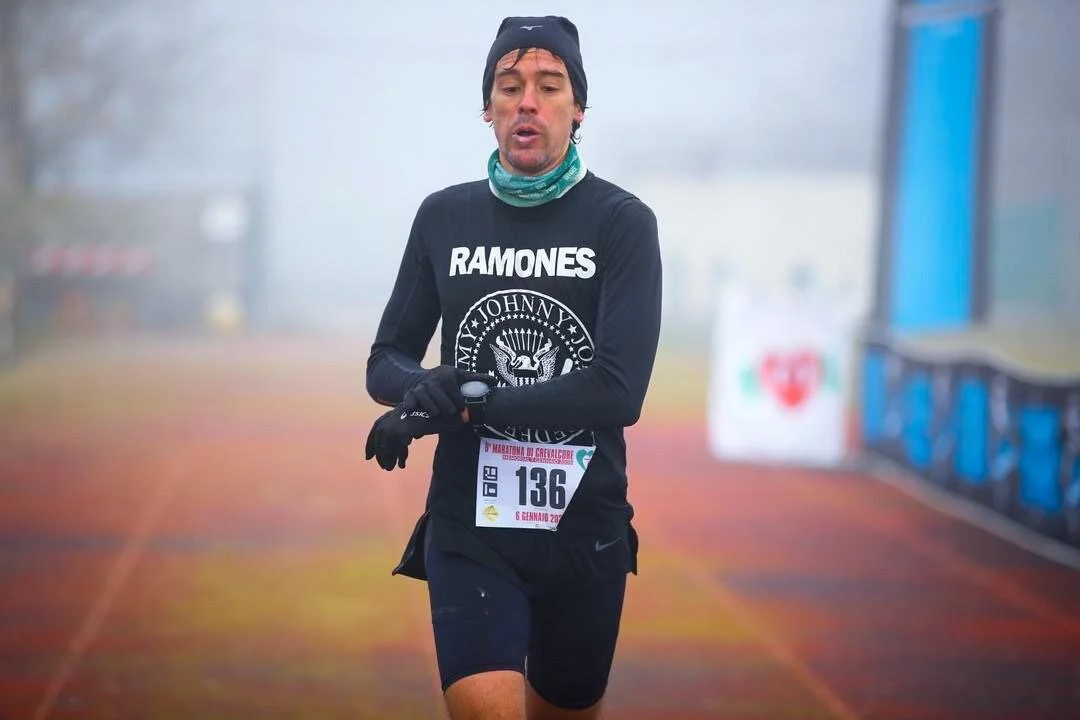As a kid my dad would always joke with me when it came to playing it safe - he’d always say “safety third” and more completely “fun first, safety third”. To that end, I only managed a handful of ER visits in that time. What that taught me was how to manage risk and understand what I could get away with. Training is not like shooting a slingshot, staying out late, or driving fast. The consequences for increasing your training load do not follow my favorite life maxim “it’s easier to ask for forgiveness than ask for permission”. Unfortunately, when you overload your body and you do it too often - something is going to give out - that can be an overwhelming amount of fatigue, a stress fracture, or you might leave the sport completely.
Read MoreHow do you fight through the pain and discomfort of racing? How do you prepare yourself mentally after the physical preparation is complete? What do you need to think through prior to race day to line yourself up for success? Here’s a big, long list of tools to work on.
Want more? Check out the YouTube video for a way to listen along.
Lower Leg Mechanics tend to get a great deal of scrutiny - everyone starts worrying about heel strike, forefoot, mid-foot and spewing jargon about shin angles. Most runners miss the meat of the message. It’s not as much about how your foot hits the ground but WHERE it’s landing in relation to your Center of Gravity (CoG).
This post is a deep dive into everything except how the foot interacts with the ground. Take a look - coaches and athletes alike can walk away with knowledge on how to improve their form in this post.
Every athlete has a unique gait and running style that propels them around the track and down the trail. The goal of this series of articles isn’t to force everyone to run the same - that’s simply impossible. The goal is to help athletes correct inefficiencies, tease out bad habits, and make corrections to their mechanics that are costing them seconds per and minutes per marathon. We’ve built this series to dive a little deeper and get into the small details. Enough talk, let’s get into it.
Read MoreGetting your running form dialed in is the best bang for your buck when it comes to time spent on developing yourself as a runner. Running Form is the single easiest way to prevent injury and increase your longevity in the sport. We believe in helping people find a lifelong love of the sport - that’s why we created a free guide to help you nail down your running form. You can find that free guide here.
Read MoreNeed some motivation to get out there and get the work done? We have the encouragement you need as well as some suggestions to help you find your motivation.
Read MoreAre you feeling guilty feeling upset about a cancelled race? Or conflicted about having more time at home? Learn how Mindfulness can help you grow as an athlete and emotional human.
Read MoreLearn the best ways to stay on pace and run your best race at your next ultra.
Read MoreNow and again it’s good to have a workout where you completely fail. Not because it’s a good ego check to be reminded that you’re an infallible human. It’s good to have the occasional workout that you blow up on. It’s a building block of being an athlete. This doesn’t mean that you set out with a plan of reckless abandon but instead, it’s the willingness to fail.
Read MoreShort athlete and coach submissions regarding creativity, fun, and smooches.
Read MoreWhat is in a shoe? Fine out how fit, heel drop, rocker, and tread can benefit or hinder your running.
Read MoreFAQ regarding the logistics and planning of participating in the Leadville Trail 100.
Read MoreLifelong Endurance is proud to introduce our newest training experience, Curated Coaching. While both forms of coaching involve plan creation and guidance from our knowledgeable Lifelong Endurance coaches, they provide differing services to meet individual athletes' needs. Our goal at every level is to provide athletes with an amazing training experience that drives them to become the best version of themselves. Coaching. A Better You.
Read MoreWhen you’re just starting to build up fitness for the season, it makes sense to start easy and work your way into harder and longer sessions. One of the principles in early training phases for my athletes is incorporating hill training. We’ve learned over the years that hill work is a great primer for the body as it prepares for more work and more intense work. Hills are a great place to get started - If you aren’t integrating them into your training - you should!
Read MoreWinter is around the corner, and the days are getting shorter and colder. For many, winter conditions are a big barrier to training for a spring event, but a big storm does not have to end your season.
Read MoreTrail runner, Michelle Hiland, demonstrates resilience and vulnerability as she overcomes injury and looks to the future.
Read MorePacing and Crewing at an ultra is an art. Lifelong Endurance athletes and coaches give advice as to how be the best team on the trail.
Read More


















